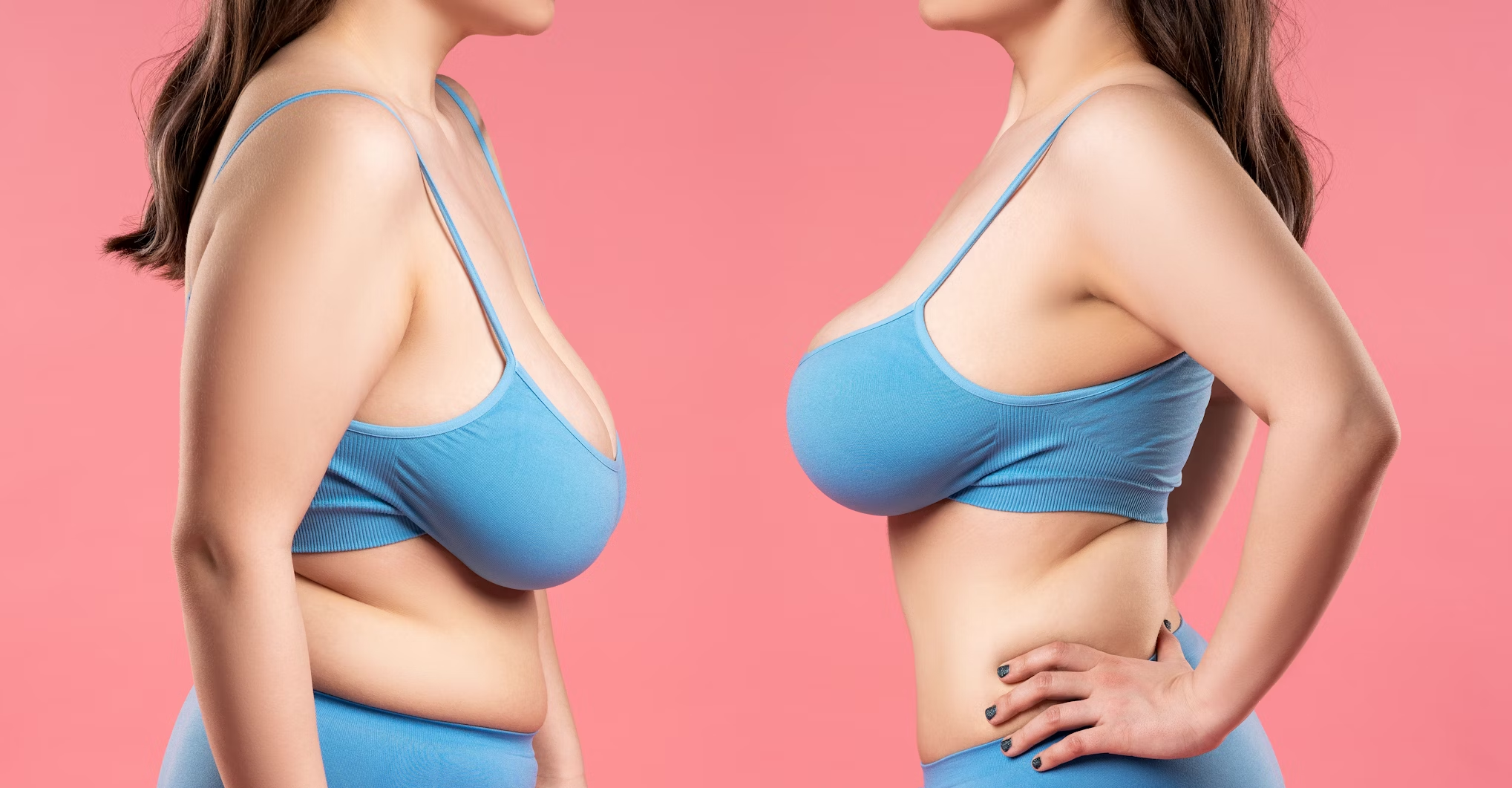
The concept of using one’s own tissue to achieve aesthetic refinement, specifically in the context of breast augmentation, represents a significant evolution away from relying purely on synthetic materials. Fat transfer breast augmentation, formally known as autologous fat grafting or lipofilling, is fundamentally a two-step procedure that leverages the body’s own resources. It is an intricate process that combines a form of body contouring—liposuction—with a targeted volume restoration technique. This methodology is particularly compelling for individuals seeking a subtle enhancement, an improved contour, or a softer outcome that aligns more closely with the natural feel of the breast. It appeals strongly to those who are hesitant about introducing a foreign object, such as a silicone or saline implant, into their body. The narrative around this type of augmentation is less about dramatic size alteration and far more about personalized sculpting and blending.
…Fat transfer breast augmentation, formally known as autologous fat grafting or lipofilling, is fundamentally a two-step procedure…
The Tri-Phasic Technical Execution: Harvesting, Refining, and Strategic Placement
The execution of fat transfer to the breast is a technically demanding process requiring expertise across three distinct phases. It begins with the controlled extraction of donor fat, typically from areas of the body that have stubborn, excess deposits, such as the abdomen, flanks, or thighs. The liposuction technique used in this stage must be gentle—often employing low-pressure aspiration or specialized water-jet methods—to maintain the viability of the fragile fat cells. Once harvested, the collected material is a mixture of fat cells, blood, and tumescent fluid, necessitating the second phase: refinement. This involves centrifugation or filtration processes designed to separate the pure, intact adipose cells from the contaminating fluids. The final, and arguably most critical, phase is the strategic placement of the purified fat. The surgeon injects small, thread-like strands of fat throughout the breast tissue at multiple levels and in many tiny tunnels. This specific, meticulous distribution is crucial because each injected fat cell must establish a new, independent blood supply to survive, a biological imperative known as ‘engraftment.’ Placing the fat in micro-droplets ensures maximum contact with the recipient tissue and blood flow, thereby optimizing the eventual volume retention.
…This involves centrifugation or filtration processes designed to separate the pure, intact adipose cells from the contaminating fluids.
The Essential Biological Challenge: The Variable Survival of Adipocytes
A primary challenge and defining characteristic of fat grafting is the inherent uncertainty regarding the fate of the transferred cells. Not all fat cells injected will survive the transition to their new environment; a significant portion—often cited to be between 20% to 50%—is naturally reabsorbed by the body in the months following the procedure. This variability makes predicting the final, retained volume considerably more complex than with implants, where the volume is known precisely at the time of insertion. The success of the engraftment is influenced by multiple factors, including the gentleness of the harvesting and processing techniques, the skill of the surgeon in placing the fat, and the intrinsic biological health and vascularity of the recipient breast tissue. The fat cells that do successfully establish a new blood supply, however, become a permanent, living part of the breast tissue, which is the foundational reason for the procedure’s unique longevity.
…a significant portion—often cited to be between 20% to 50%—is naturally reabsorbed by the body in the months following the procedure.
Limitations on Volume Increase: The Constraint of Tissue Capacity
The desire for substantial size increases is often a point where autologous fat transfer reaches its limit. Unlike implants, which can provide a volume increase of multiple cup sizes, fat grafting is inherently constrained by the maximum volume of fat the breast can safely and effectively accommodate in a single session. Attempting to inject too large a volume at once—a concept known as ‘over-saturation’—overwhelms the tissue’s capacity to supply blood to the transplanted cells. This significantly decreases the fat survival rate and increases the risk of complications such as fat necrosis (fat cell death), oil cysts, or calcification. Consequently, fat transfer is best suited for patients seeking a moderate augmentation, typically limited to about a half to one full cup size increase per procedure. Achieving a larger volume often necessitates planning for multiple, staged surgeries spaced several months apart to allow the breast tissue to heal and successfully integrate the initial graft.
…fat transfer is best suited for patients seeking a moderate augmentation, typically limited to about a half to one full cup size increase per procedure.
The Unique Aesthetics and Tactile Sensation: A Soft and Undetectable Result
One of the most compelling arguments for choosing fat transfer over implants lies in the quality of the final result. Since the breast is augmented using the patient’s own adipose tissue, the resulting breast contour possesses a distinctly natural look and feel. The augmentation is subtle, working to fill in contours, correct minor asymmetries, and improve projection without the defined edge or firmness sometimes associated with an implant. To the touch, the augmented breast is soft, pliable, and indistinguishable from native breast tissue, offering an unnoticeable, tactile outcome that synthetic materials cannot perfectly replicate. This naturalistic advantage extends beyond the breast itself, as the dual benefit of removing unwanted fat from a donor area simultaneously contributes to a more streamlined and improved overall body shape.
…The augmentation is subtle, working to fill in contours, correct minor asymmetries, and improve projection without the defined edge or firmness sometimes associated with an implant.
A Dual-Site Recovery Profile: Navigating Two Surgical Fields
The recovery process following a fat transfer breast augmentation is fundamentally different from a standard implant procedure because it involves two separate surgical sites: the donor area and the recipient breast. This results in a dual recovery profile, often meaning that the discomfort and bruising in the liposuctioned donor area—such as the abdomen or thighs—can be more noticeable than the sensation in the breasts themselves. Patients must manage swelling and bruising in the donor area, frequently with the assistance of compression garments, which are vital for smoothing the contour and minimizing fluid accumulation. In the recipient breast area, the focus of aftercare is gentle support and protection from compression to ensure the newly transferred fat cells have the best chance to survive. Strenuous activity is restricted for several weeks to prevent trauma to the delicate, engrafting fat.
…the discomfort and bruising in the liposuctioned donor area—such as the abdomen or thighs—can be more noticeable than the sensation in the breasts themselves.
Longevity and Weight Dynamics: The Permanent Integration of Living Tissue
Once the initial post-operative period of fat reabsorption is complete—typically six months—the surviving fat cells are considered permanently integrated into the breast tissue. Crucially, these cells retain the metabolic characteristics of all other fat cells in the body. This means that if a patient experiences significant weight gain, the augmented breasts will also increase in size, just as they would naturally. Conversely, substantial weight loss will lead to a reduction in the size of the augmented breasts. This dynamic nature is a double-edged sword: it ensures the results age naturally with the patient, but it also means the maintenance of a stable weight is directly linked to the stability of the long-term aesthetic outcome. This inherent biological connection highlights the living, adapting nature of the transferred volume.
…the maintenance of a stable weight is directly linked to the stability of the long-term aesthetic outcome.
A Diagnostic Consideration: Imaging Challenges and Calcification Risk
Although fat transfer is widely considered safe, it introduces a specific consideration regarding post-operative radiological imaging. The process of fat necrosis, where some non-surviving fat cells break down, can lead to the formation of micro-calcifications or small oil cysts in the breast tissue. While these are almost always benign, the appearance of calcifications on a mammogram can sometimes be difficult for a radiologist to distinguish from calcifications associated with early signs of malignancy. Therefore, patients must inform all future healthcare providers and imaging technicians that they have undergone a fat transfer procedure. Advanced imaging techniques or correlation with prior baseline studies can typically resolve any diagnostic ambiguity, underscoring the necessity of a detailed medical history.
…the appearance of calcifications on a mammogram can sometimes be difficult for a radiologist to distinguish from calcifications associated with early signs of malignancy.
The Role in Revision and Reconstruction: Beyond Pure Augmentation
The utility of autologous fat grafting extends significantly beyond primary aesthetic augmentation. It has become an invaluable tool in reconstructive and revisionary breast surgery. For instance, it can be used to improve contour deformities following lumpectomy, to smooth and soften the visible rippling or palpable edges of breast implants, or to correct minor asymmetries left after breast reconstruction. In these contexts, the goal is often not volume addition but rather texture improvement and contour refinement. The ability of the living fat cells to integrate and bring blood supply to irradiated or scarred tissue makes it a restorative technique that can significantly enhance the quality and suppleness of the surrounding skin and tissue envelope.
…The ability of the living fat cells to integrate and bring blood supply to irradiated or scarred tissue makes it a restorative technique…
Patient Selection Parameters: The Importance of Adequate Donor Reserves
The suitability of a patient for fat transfer is fundamentally tied to a single physical necessity: the availability of sufficient donor fat. Unlike the implant method, which is available to almost any body type, fat grafting is impractical for extremely lean individuals. A patient must possess adequate, pinchable subcutaneous fat in at least one donor area to harvest the necessary volume, not only for the desired breast increase but also to account for the predictable 20-50% rate of reabsorption. The surgeon must carefully assess the total harvestable volume against the patient’s goal, often using this factor as the primary determinant in recommending whether fat transfer, implants, or a combination approach is the most realistic path to achieving the desired outcome.
Autologous fat grafting offers a truly natural breast enhancement solution, permanently integrating your own living tissue for a soft, subtle, and stable volume result.
